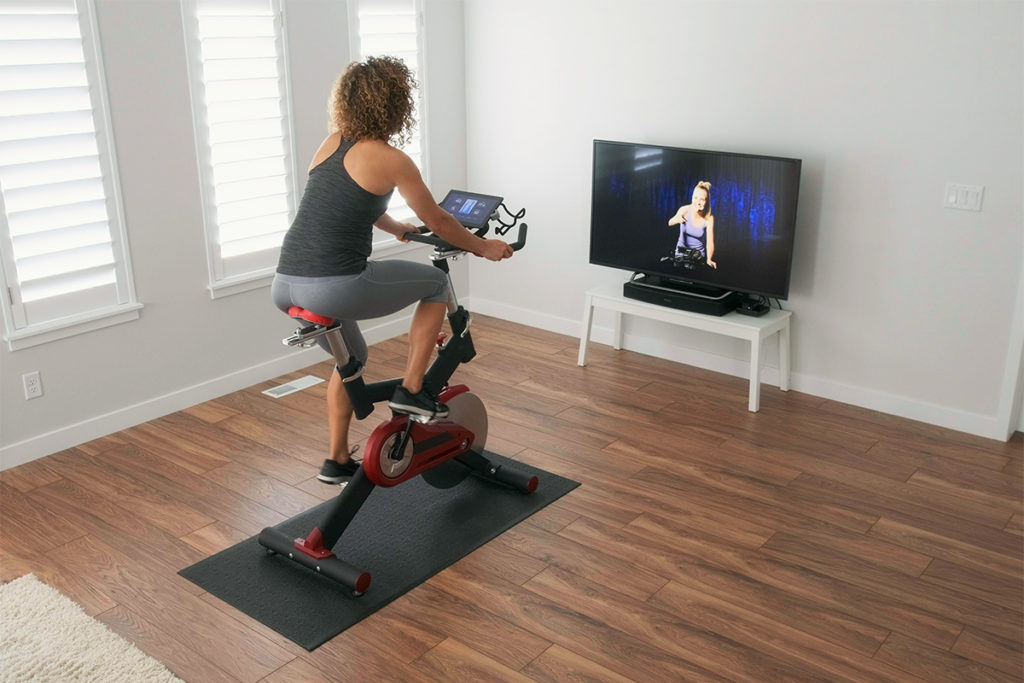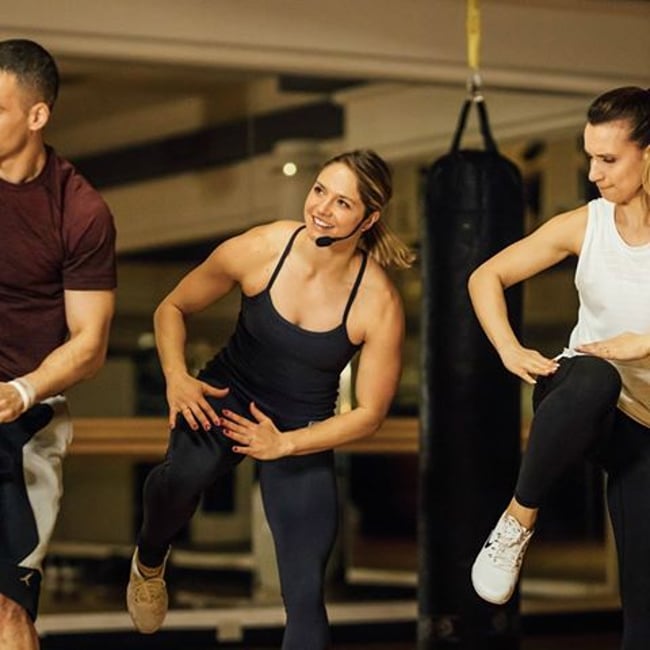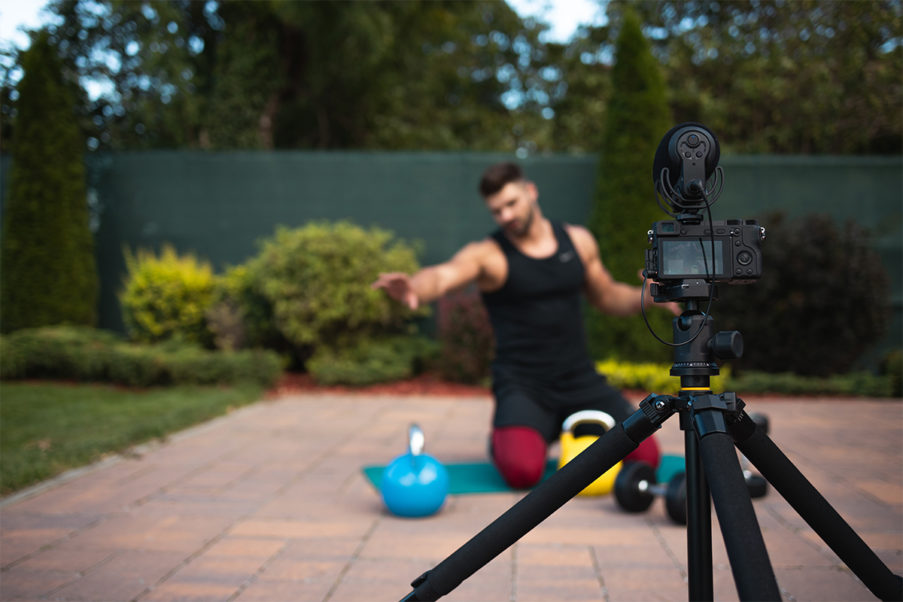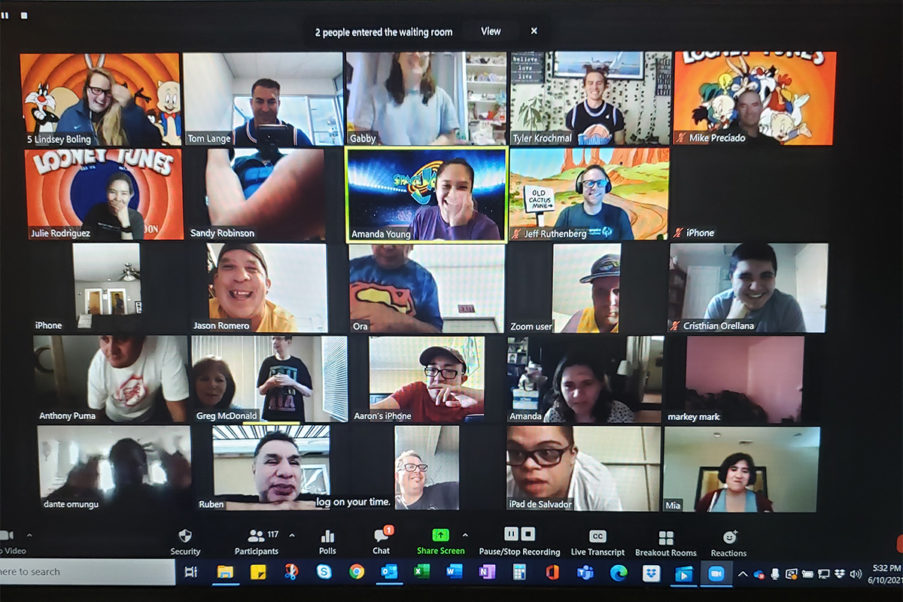5 Lessons From Virtual Fitness Companies
Don’t fear streaming classes. Learn from them instead.

Peloton®, Mirror and Tonal are a few of the virtual fitness companies that offer popular online workout experiences. Doesn’t it seem as though they have an endless budget for licensed music, along with teams of professionals to oversee production, editing and marketing? Meanwhile, you spend hours in your living room or garage trying to figure out how to film from your phone! You test audio, obsess over lighting and wonder how in the world you’re going to make this virtual exercise world come alive.
Sure, it’s intimidating. But don’t give up! You have years of experience and are passionate about what you do. Take a moment to unpack the value and significance that your virtual fitness options provide. We can all learn from big players in the virtual workout space and, in the process, enhance our own roles in today’s fitness world.
Virtual Fitness: We’re in This Together
You’re not alone! While fitness professionals have been pushed into the digital space at an accelerated clip, so have consumers. “Digital is no longer innovation; it’s an expectation,” says Shannon Fable, 2013 IDEA Fitness Instructor of the Year and owner of SF Resources in Boulder, Colorado. “So many of us previously reasoned with not teaching virtually due to the belief that ‘you can’t replace the in-person,’ but we can no longer look the other way. We need to think less about virtual fitness being an ‘either/or’ and see it more as an ‘and.’ Just as we saw boutique studios pop up [and learned from them], we can learn many lessons from these virtual fitness companies and understand that things like community are achievable in a virtual environment as well.”
Fitness consumer behavior has changed. There will always be circumstances where participants can’t make it in person, and virtual fitness experiences keep them motivated. Why not be a part of that alternative?
Highly successful virtual fitness companies can teach us a lot, including how and why our clients use their apps—sometimes in addition to attending our own classes. Here are five takeaways to help you recognize the importance of building your own virtual fitness offerings.
See also: Ramping Up Your Virtual Zoom Studio
1. Be Authentic
Large virtual fitness companies brand and market their classes with authenticity in mind. After all, a squat is a squat, a downward-facing dog is a downward-facing dog, a sprint is a sprint. The exclusive, concierge experience emerges in the unique way instructors create and present their classes. These companies also encourage feedback, and they pay attention to data collected. They rely on views, but also on time watched and engagement, to identify what is working and what isn’t. “A lot of people who were originally not interested in virtual as an option are now looking for variety and for instructors who connect with them and fulfill their specific needs,” Fable says.
Try this: Ask your participants what they most enjoy about you and your classes. Which workouts are their favorites? Ask a lot of questions and take notes. Companies like Peloton act on the honest feedback they receive, and so should you. There is only one you. Home in on what makes you and your services unique, and capitalize on those properties. Teach with the intention to enhance lives.
Instead of only focusing on skills, such as cuing and demonstrating moves, identify what makes you approachable and relatable. See yourself as the leader, not just the person in charge of the day’s workout. Be specific about who you are, what you love and why you love it. This authenticity not only makes the experience more enjoyable for participants—it also helps you stay true to yourself and your strengths.
2. Build and Support a Virtual Fitness Community
Virtual fitness companies have found ways to tap into one of the most valuable life resources: social connection. Instructors and technology work together to create moments of positivity and fun. Algorithms introduce participants to new formats and instructors at just the right moments. While workouts might feel rewarding on their own, the yearn to return to these classes hinges on cyber relationships. The teachers call out people by name and provide specific and measurable encouragement throughout the sessions. Strategic interactions between participants happen through social media platform integration and the friendly nudge of competition provided by leaderboards and challenges.
Cultivate connection by smiling, simulating eye contact (by looking directly at the camera), calling out names and celebrating movement as a team. While brilliant tech formulas that uncover user habits and interests may not be at your fingertips, you can consistently share your offerings and invite participants to return. Build in your own form of gamification by tracking participant attendance, rewarding consistency with small prizes or discounts, and planning fun challenges.
See also: The Power of Connection in the Age of Social Distancing
3. Expand Reach and Provide Virtual Fitness Options

Get creative with the length of sessions and provide a combination of both real-time classes and recorded workouts.
Large virtual fitness companies recognize that each day presents its own set of challenges to subscribers’ schedules. To help users work class time into their lives, these brands provide libraries of shorter recorded workouts, accessible at any time, giving people the ability to build and construct the experience they need for any specific day or circumstance.
Instead of limiting subscribers to your schedule and needs, offer options. Get creative with the length of sessions and provide a combination of both synchronous (real-time) classes and access to recorded workouts. Be creative with intensity levels, equipment and workout structure. Think of virtual as an enhancement to your reach—something that helps you overcome the limitations of an in-person experience, such as capacity and lack of equipment. More importantly, recognize how much more intimidating the in-person experience can be for new participants. How can your digital options provide a platform for people to discover your instruction, try it and realize it meets their movement needs?
4. Get Creative With Encouragement
Customer retention is the number-one goal for virtual fitness companies. That’s why they’re constantly generating creative ways of reaching out, such as sending reminders, recognizing milestones and doing everything they can to keep participants excited and engaged. The lesson we can take from this is to always stay in touch, be available and be positive. Every communication from these companies has a positive spin, even if it’s a message about a missed workout.
Get creative by providing a monthly newsletter or curating themes around a series of workouts so subscribers are encouraged to attend more than just one. Give advice about overall wellness (within your scope of practice), acknowledge that finding time to exercise isn’t always easy and provide practical guidance.
5. Don’t Be Afraid to Collaborate
Peloton, Mirror and Tonal don’t try to be the best at everything, and neither should you. Instead, they develop strategic partnerships to enhance what they do without diminishing their own products and services. A great example of this is Peloton’s partnership with Parkwood Entertainment, a film, record label and production company founded by Beyoncé. Peloton’s production and music are excellent, but an expert and leader in that industry may help them make it better.
In the same vein, we fitness instructors must work together to discover the tools and platforms that will help us use technology to its full potential. Partnerships will help us discover new ways to develop our following and make money! Instead of trying to do and learn everything by ourselves, we can seek out digital fitness entrepreneurs, relevant education, mentors and virtual communities. We are stronger in numbers, and we are on the same team of movement motivators; forgetting that will only hinder our potential and growth.
See also: Tips on Teaching Virtual Fitness Classes
Meet People Where They Are
Variety is necessary, and it’s time to come to terms with the fact that there are more options out there. Meet participants where they are and offer them fitness on the go, where and when they need it—customized, convenient and with a nod toward coexistence. “We need to link arms, so to speak,” according to Fable. “No one should see themselves as above it all. Don’t try to compete.”
Rather than becoming paralyzed by comparison, embrace the five lessons these powerful virtual fitness companies provide. Observe and understand how they introduce fitness to so many people. Use these strategies to build your own relevant community.
Rock Your Online Classes
As the world shifts, wellness and fitness pros of all kinds are called to move their presence online, yet very few people are doing it as professionally or powerfully as they could. Rise above the rest with IDEA presenter Sadie Nardini’s DIY tips for navigating the online world; creating your best courses and/or classes; and using the internet to spotlight your purpose, connect with the right community and gain financial success from your unique offerings.
Find out more: Rock Your Online Courses and Classes. It’s free with your IDEAfit+ Membership.
Staci Alden
Staci Alden is committed to helping group fitness managers elevate their programs, instructors, and leadership skills through her writing, presentations, and YouTube channel. For more than a decade, she has overseen a team of over 100 private Pilates and group fitness instructors at a luxury health club in Seattle, Washington. Staci also is certified as a master Balanced Body® barre and MOTR® instructor.






